7 Colors You Can Add Into a Neutral Living Room Without Upsetting Your Scheme — Because All-Beige Spaces Are Officially Out
Opting for an entirely neutral color palette runs the risk of feeling flat and lifeless — these are the colors designers are adding into living rooms to bring more dimension
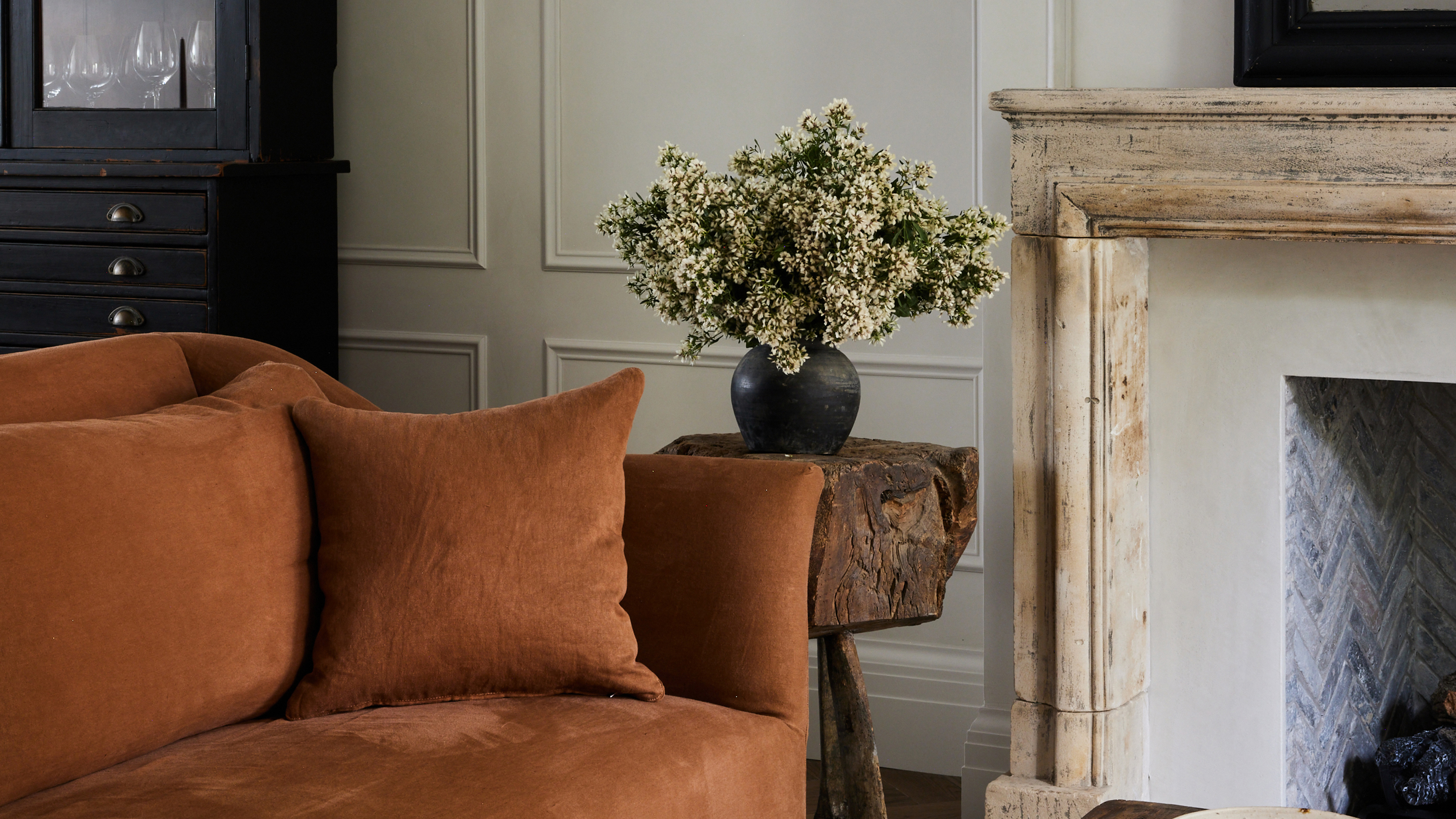

A pared-back living room doesn't need to be completely devoid of color. In fact, the verdict is just in, and the 'all-beige' schemes of yesteryear are on a downward trajectory. In how we're decorating now, it seems we want at least one moment of color to punctuate, but what are the best colors to add into a neutral living room that won't disrupt your calm and coordinated palette?
Your search for neutral living room ideas might not yield lots of examples of how to introduce color into your space, but we're not here, right now, to tell you how to get the balance right — after all, when is a neutral room no longer a neutral room? Instead let us delve into which colors you can add into a living room that won't take away from all those still-positive qualities of a neutral scheme.
That calmness, cohesiveness, and elegance that comes with from a living room with a pared-back palette isn't something we want to lose, so we're taking some advice from color experts on how best to employ colors, and which ones, to inject some extra depth into our decorating schemes.
1. Amber and Terracotta
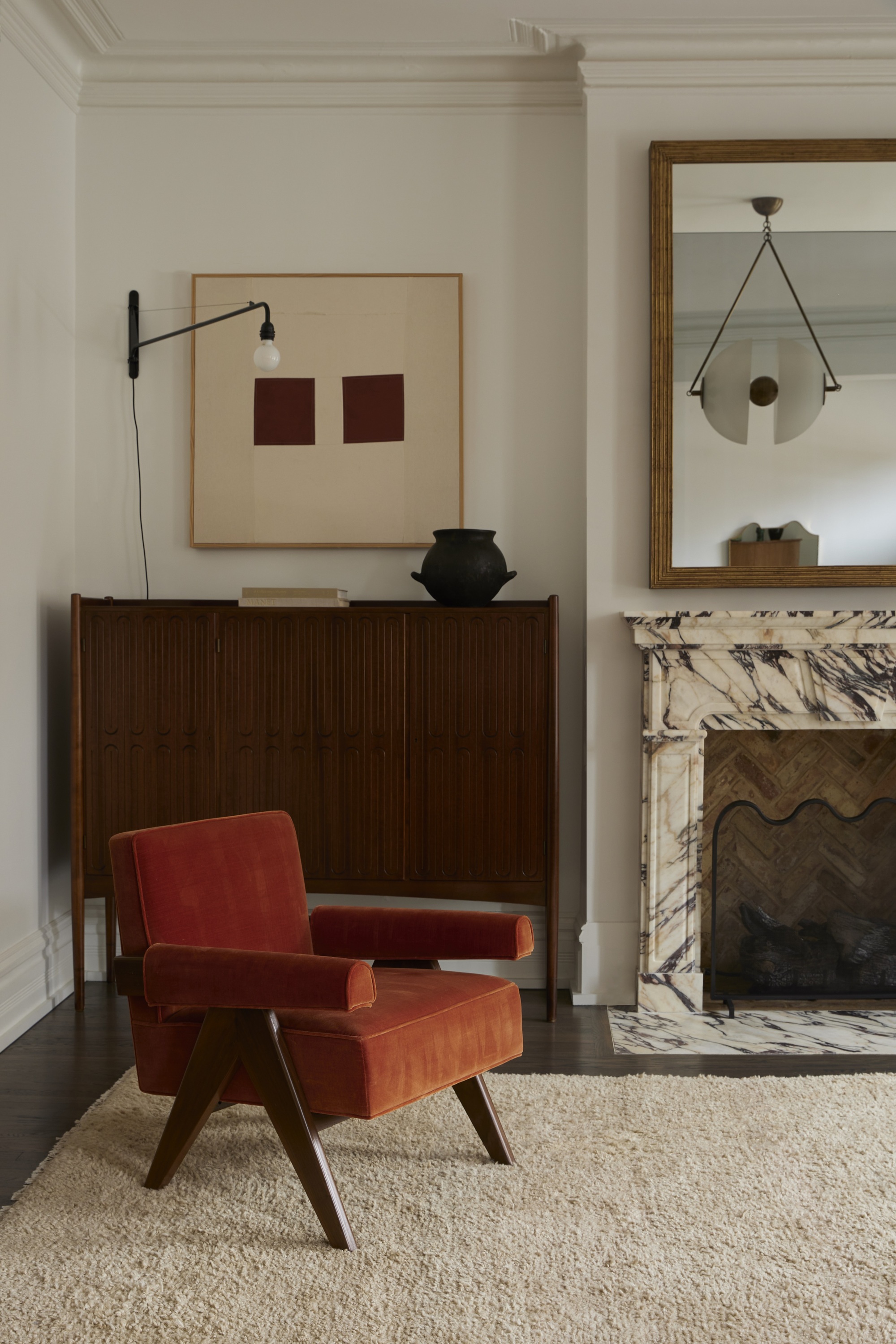
In any room, it is not only important to take into account the amount of natural light it receives, but also the type of light it gets — usually dictated by the room's orientation. This will have an enormous effect on how colors appear within your living room ideas — plus some colors suit certain types of natural light better than others.
"North-facing rooms often have cooler natural light," advises Philippa Radon, the color and design expert at C2 Paint. "To counterbalance this, layer in warmer tones like soft terracotta, golden yellow, or muted blushes in the form of throw pillows, rugs, and curtains."
"In a north-facing living room that naturally has cooler, blue-ish light, I’d recommend adding warm terracotta throw pillows and a burnt-orange velvet armchair to immediately inject warmth," suggests Jodi Peterman, owner and principal at Elizabeth Erin Designs. Pair these with an amber-toned ceramic lamp or gold-framed artwork to complement the space. These specific shades not only counteract the cool light but also create a cozy, welcoming mood."
2. Deep Blues
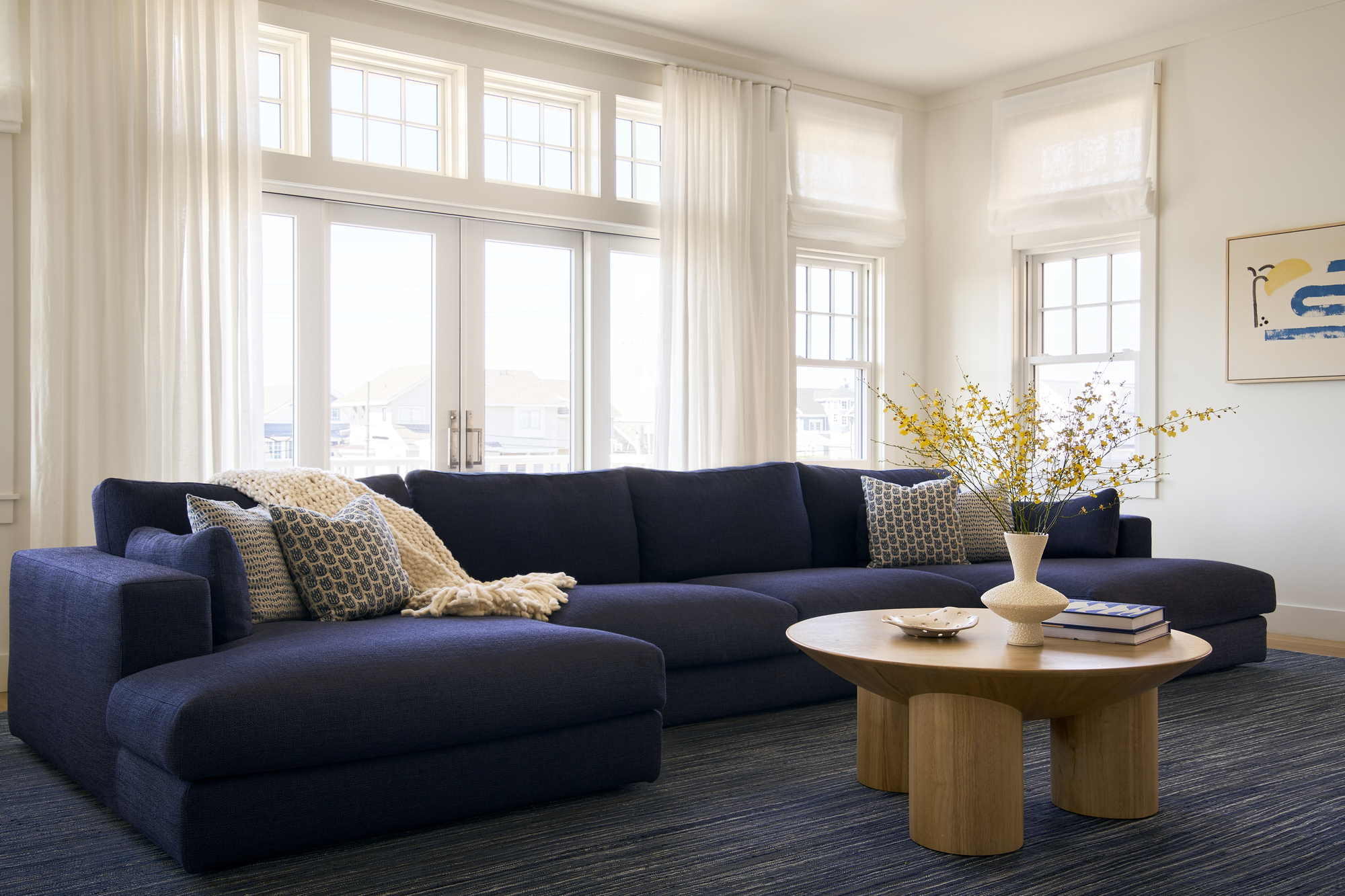
Blue living room ideas are hugely popular, largely due to the fact that there is such a breadth of choice when it comes to blues — from breezy baby hues to moody navy. It is these deeper, richer blues that really pair so well with neutral living room schemes.
"I totally love mixing earthy neutral tones with deep blues," says Steven Mena, founder of AAA Fence and Deck. "Picture warm beige or soft taupe hanging out with rich navy blue or indigo. These tones bring a nice vibe of elegance and calm without making the room feel heavy. The blue adds a nice touch of drama, and the neutral foundation really helps to keep things in check.
"If your living room gets a ton of natural light, that blue is really going to stand out, but even in a darker spot, it’ll still bring that cozy vibe and warmth you’re likely after," adds Steven.
3. Olive and Sage Green
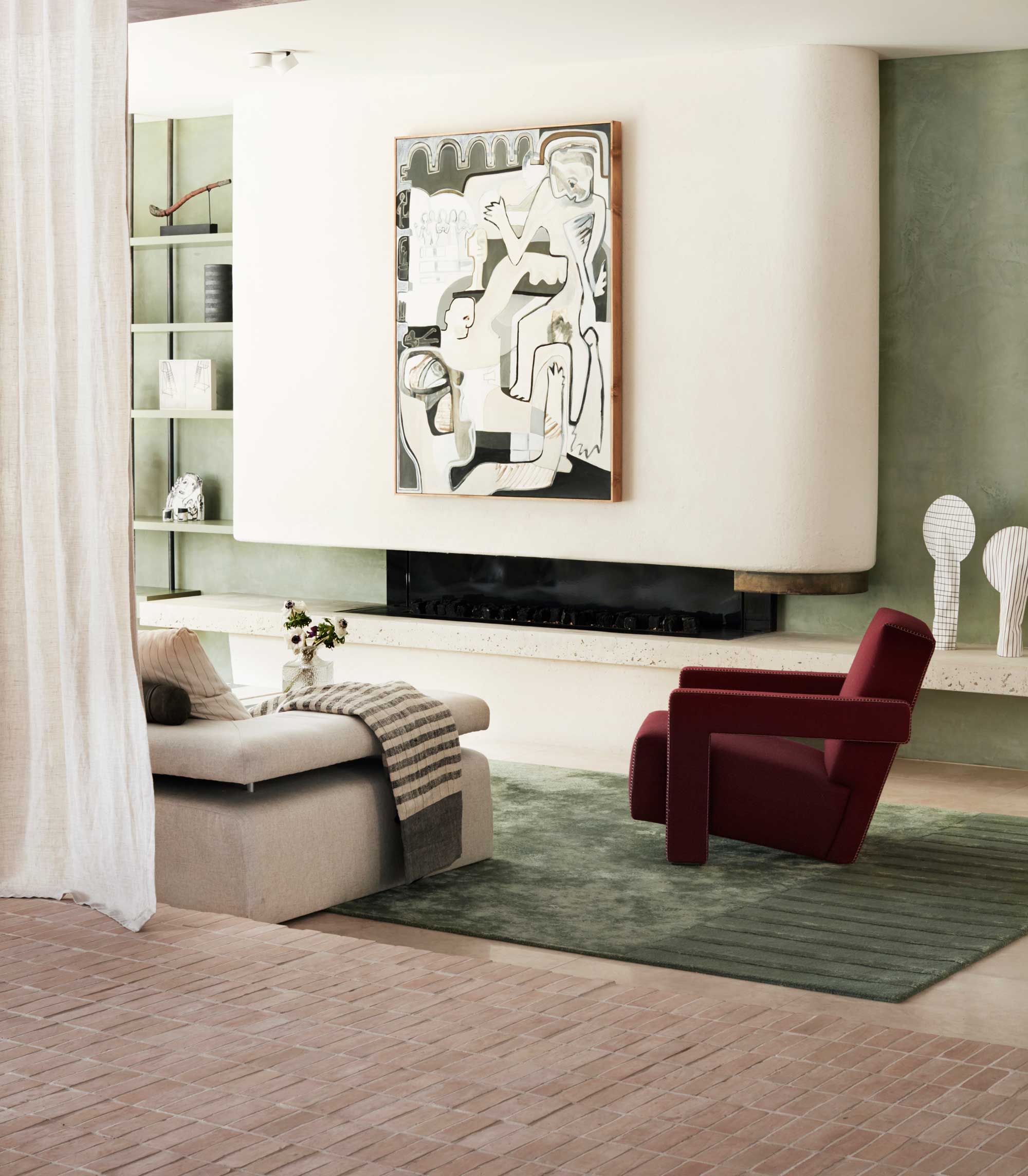
Most green living room ideas will sit beautifully alongside a neutral palette, particularly one with grays and beige. It's a soft way to introduce color, one that will both feeling relaxing, but can also make a bolder statement, depending on the saturation you go with.
"To elevate a beige sofa, layer it with emerald green velvet pillows and a patterned lumbar pillow featuring subtle gold and cream accents," suggests Jodi Peterman. "For curtains, try linen panels in a soft sage green — light enough to keep the room airy but colorful enough to break up the monotony of neutrals."
Philippa Radon likes how green can give a neutral scheme more energy. "Painting trims, doors, or even a ceiling in a soft complementary hue adds an unexpected pop of interest — or using a percentage on the ceiling creates dimension," says Philippa. "For example, in a beige or greige room, a deep olive green can ground the space and add definition."
4. Mustard Yellow
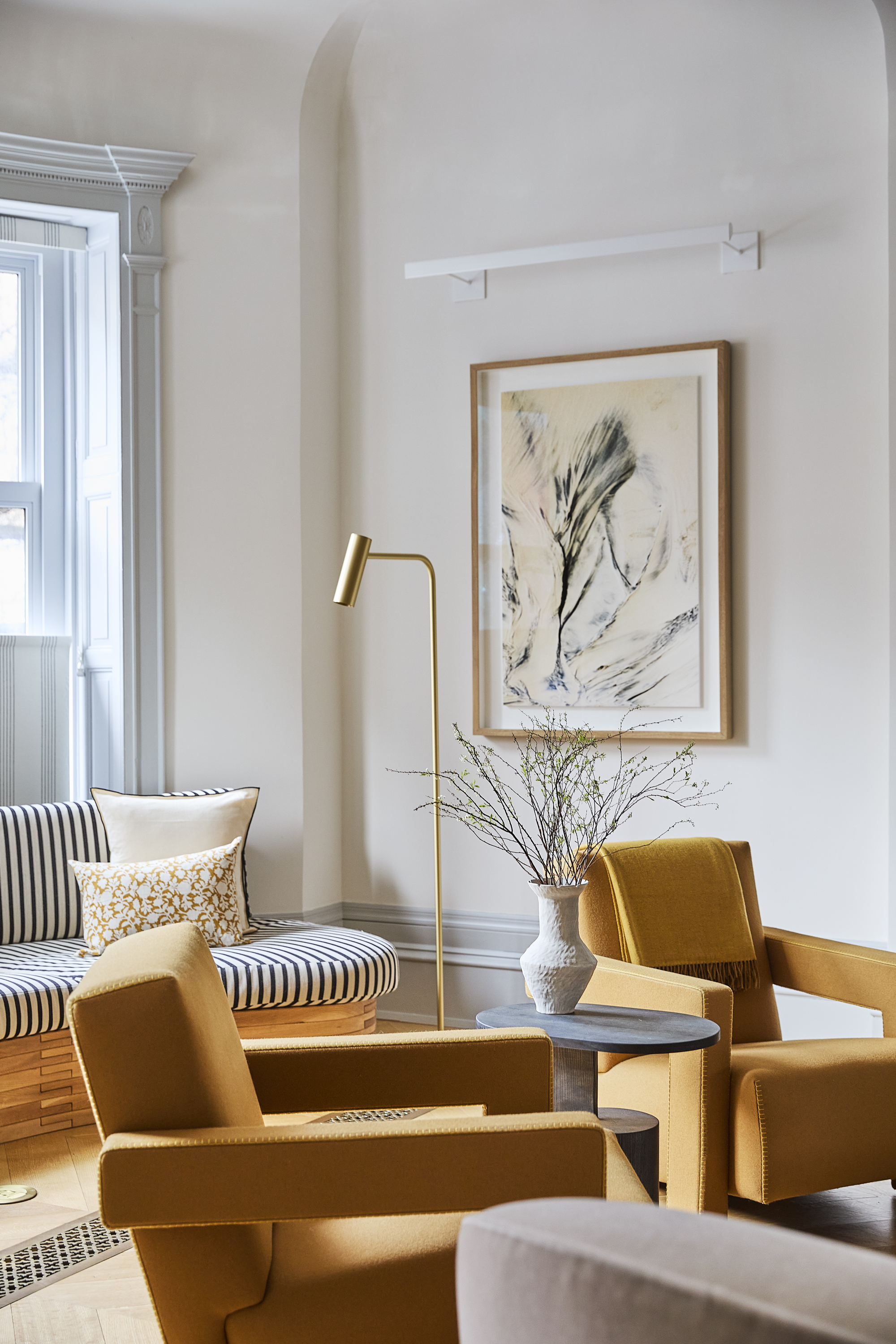
Deep, rich, golden mustard yellows will inject a level of warmth and charm into a pared-back living room scheme — plus they are easy to incorporate in the form of yellow home accessories.
"Mustard yellow and charcoal gray look great together," says Steven Mena. "It's a pretty daring pick, but it adds a nice touch of warmth and character. Mustard yellow is such a fun and lively color. Pairing it with those cooler gray shades really brings together a nice blend of modern style and cozy vibes.
"If you have a room that gets a lot of natural light, this is awesome because the yellow really boosts the brightness," continues Steven. "Even in a dimly lit space, the contrast between those two colors still creates a fun and inviting atmosphere. Why not sprinkle in some mustard in with throw pillows, rugs, or smaller accent pieces? Let the charcoal take the spotlight on the bigger stuff like your sofa or wall color."
5. Rich Purples and Reds
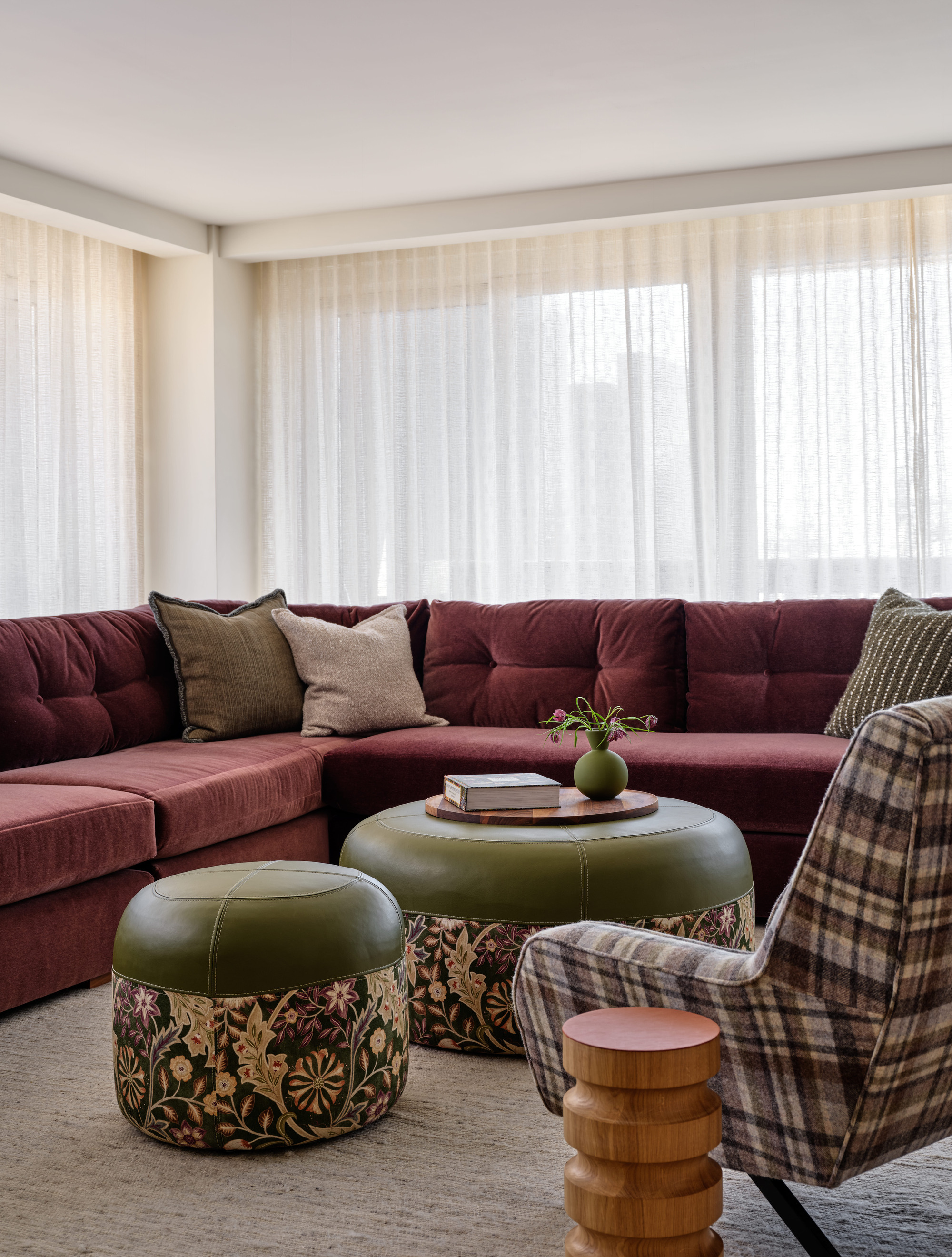
Rich, jewel-inspired tones, such as purple and deep blood reds are a fantastic route to creating a living room that an opulent feel — plus, they won't feel overwhelming in an otherwise neutral space. In fact, there are lots of calming red room ideas despite what many people think of this vibrant shade.
While you might feel nervous about going overboard with rich purples and heady reds, there are ways of using them and combining them with other, more grounded, shades that can really bring a scheme to life.
"If your neutral living room feels too bland, choose a Persian-style rug with rich tones like burgundy, navy, and cream," says Jodi Peterman. "This works particularly well if your furniture is in shades of beige or taupe. Layer the rug with a simple coffee table in dark walnut or black metal to ground the space and create contrast. A specific option could be a hand-knotted wool rug for both texture and durability."
And your lighting scheme can also play a part in how these rich colors layer in. "Warm artificial lighting (such as incandescent or LED bulbs with a warm color temperature) pairs beautifully with deep, rich jewel tones like emerald green or aubergine," adds Philippa Radon.
6. Blush Pink
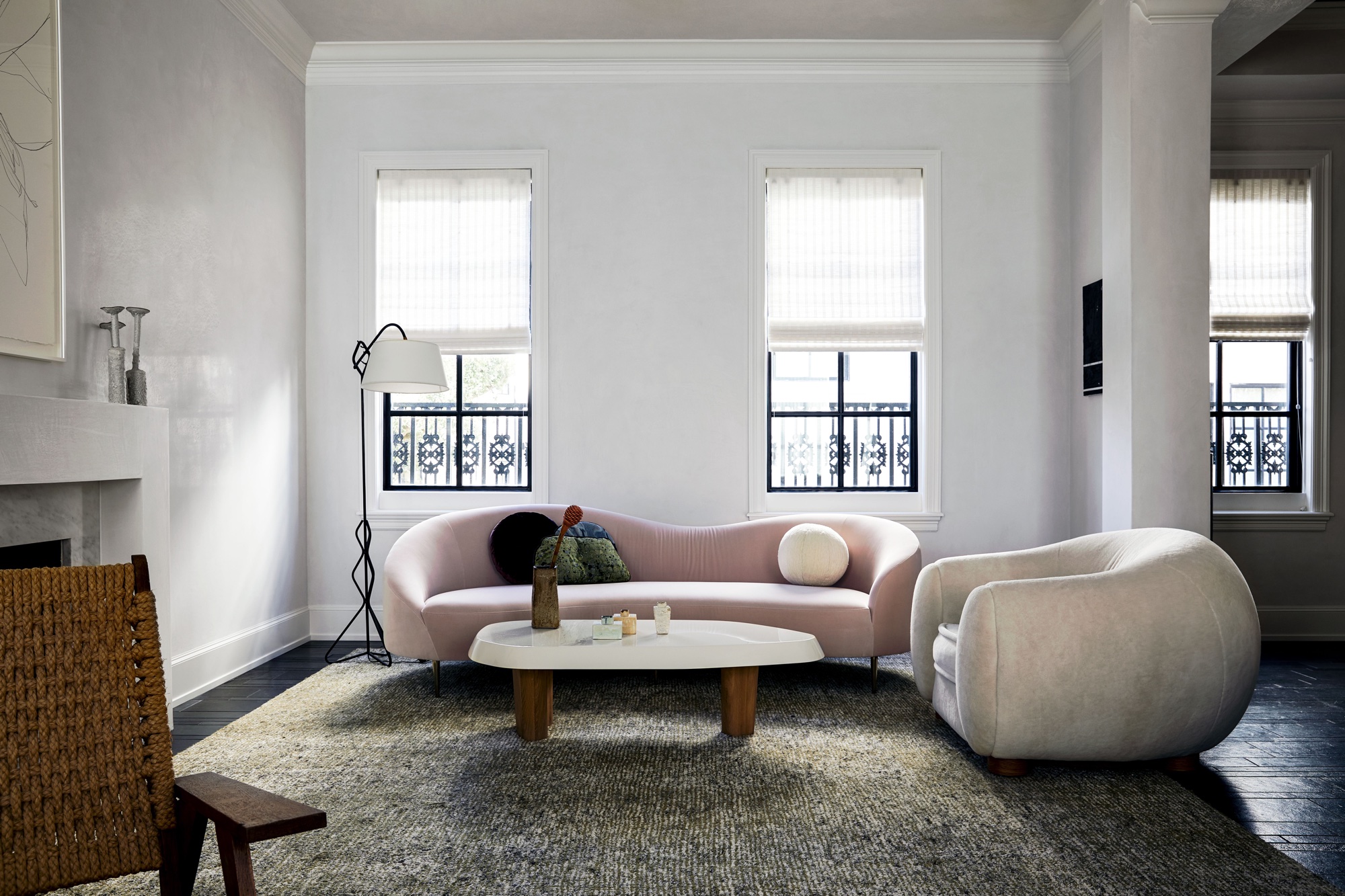
Pink is such a happy color and comes in a dazzling array of hues, from hot lipstick pinks to pretty baby shades. If you want a fast route to a living room that feels both warm and sophisticated, there are plenty of modern ways to decorate with pink, and a powdery blush pink is something of a saviour in a neutral scheme.
"You could hang a large abstract canvas featuring soft blush, earthy ochre, and hints of gray to introduce color while staying within a neutral palette," advises Jodi Peterman. "On your console table, you could display a pair of terracotta vases filled with dried pampas grass or eucalyptus. For bookshelves, stack coffee table books with colorful spines — think blush pink, teal or soft gold — to draw the eye while keeping the space polished."
7. Other Neutrals
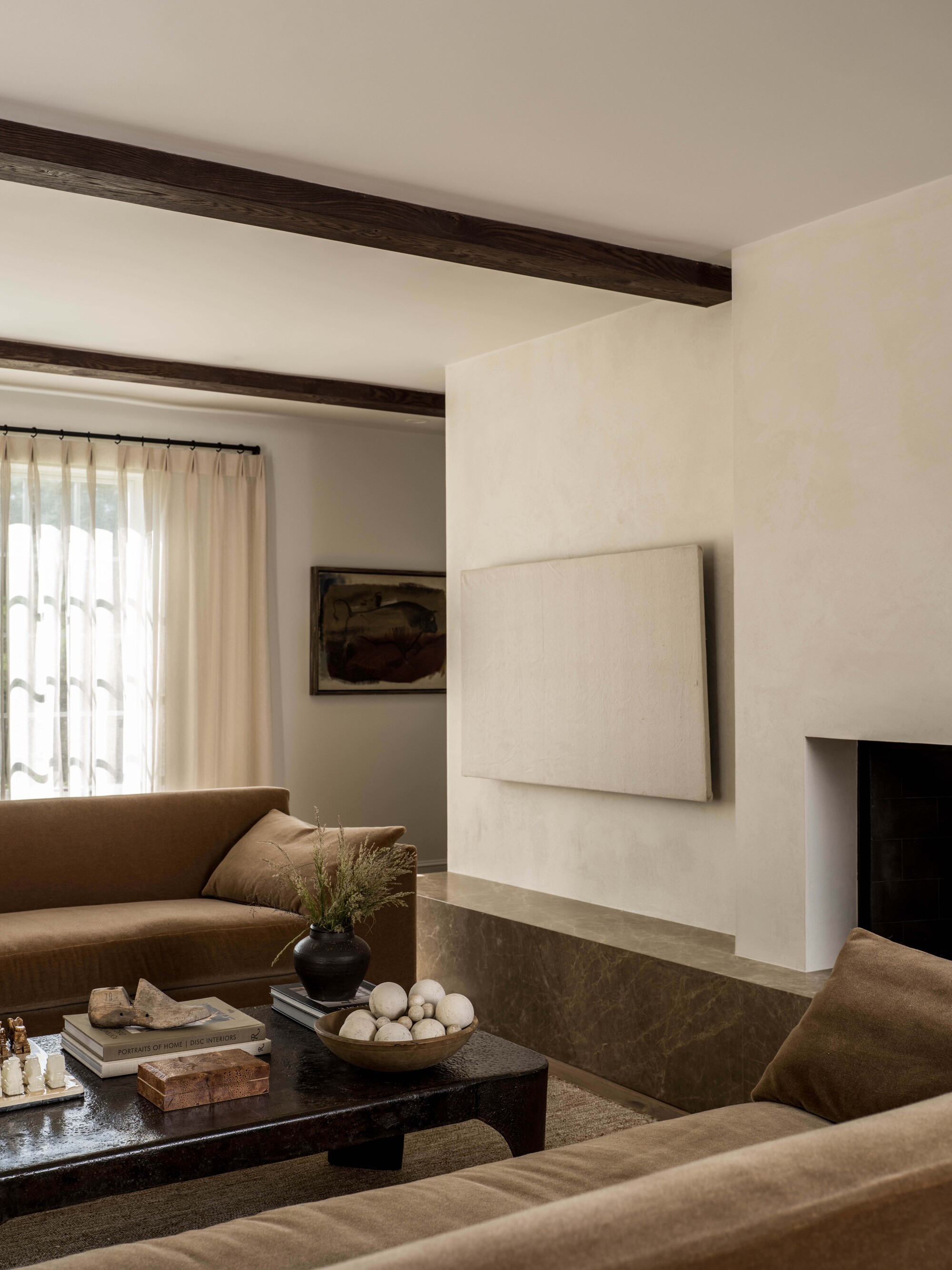
There is absolutely nothing in the rulebook to say that neutrals have to be paired with brighter, more colorful shades — in many cases, simply layering a variety of neutrals together can work just as well. Neutrals are also colors that make living rooms look bigger — something to consider if your space is on the smaller side.
"Pair them with similar warm neutrals such as cream, beige, and white to ooze comfort in a classy and effortless way," suggests Helen Shaw, director of international marketing at Benjamin Moore. "Elevate this timeless look with layers of texture such as dark woods, tactile bouclé textiles, and sleek stone surfaces like marble and quartz. Alternatively, build on the warm tones by layering with natural materials such as leather, warm wood, and stone to create a modern, rustic feel.
"A delicate cream hue, such as Linen Sand 2151-60, is both mellow and warm so will instantly give off a cozy, inviting glow, particularly in south-facing living rooms with lots of natural light," continues Helen. "It’s a great base color that easily affords you the ability to switch out little details as your taste (or the seasons) shift."
"Where most of us think of a neutral as an ‘off’ white, something with a little more character that leans towards pale greys or brown-ish whites can be neutrals too, especially our classic Setting Plaster, the warmest of earthy pinks," says Patrick O'Donnell, paint expert and brand ambassador at Farrow & Ball. "This color is brilliant at bringing delicate warmth to a poorly lit space or ‘bleaches’ out rather beautifully in a bright and sunny room so has true versatility in its uses.
"Use Setting Plaster on your walls in a brightly lit living room and keep trim and ceiling in an empathetic white, such as Dimity, bringing in a bold accent on a fitted bookcase in something fiery like Bamboozle or more restrained yet still dramatic in Inchyra Blue."
FAQs
How Do You Add a Pop of Color to a Neutral Living Room?
While you might have gone to great effort to create a subtle and sophisticated neutral scheme for your living room, that doesn't mean it won't benefit from a little contrast in the form of a splash of color. But if you want to know how to add a pop of color to a neutral living room in a way that won't ruin your hard work, how should you approach this?
"You can easily maintain a neutral scheme whilst introducing splashes of color by introducing these in accessories and soft furnishings such as cushions, vases, or curtains," explains Helen Shaw. "To ensure cohesion in the look opt for colors like olive green, sage, indigo, or teal — all will add a little extra life into your space and blend beautifully with a neutral palette.”
And don't overlook the effect adding in a little greenery will have on your overall look either. "Houseplants can add a great pop of color and accent for a neutral living room, and really help boost that coziness factor lots of people are looking for in this space," says Carr Lanphier, CEO of Improovy.
And, finally, when bringing in colors do bear in mind how to use them in a way that complements rather than overwhelms. "One of the rules that seems to work is the 60-30-10 rule," says Philippa Radon. "60% neutral base (walls, large furniture), 30% secondary color (rugs, curtains) and 10% accent color (pillows, decor). For example, a taupe sofa (60%) could be paired with a rich indigo area rug (30%) and pops of saffron yellow in vases and art (10%)."
If you are worried about a lack of color resulting in a cold scheme, you might want to read up on the best tips for how to make a neutral living room feel cozy. But remember, just because you want pared-back, doesn't you can have a pop of color.
Be The First To Know
The Livingetc newsletters are your inside source for what’s shaping interiors now - and what’s next. Discover trend forecasts, smart style ideas, and curated shopping inspiration that brings design to life. Subscribe today and stay ahead of the curve.

Natasha Brinsmead is a freelance homes and interiors journalist with over 20 years experience in the field. As former Associate Editor of Homebuilding & Renovating magazine, Natasha has researched and written about everything from how to design a new kitchen from scratch to knocking down walls safely, from how to lay flooring to how to insulate an old house. She has carried out a number of renovation projects of her own on a DIY basis and is currently on the lookout for her next project.
-
 The 'New British' Style? This Victorian London Home Embraces Its Owners' Global Background
The 'New British' Style? This Victorian London Home Embraces Its Owners' Global BackgroundWarm timber details, confident color pops, and an uninterrupted connection to the garden are the hallmarks of this relaxed yet design-forward family home
By Emma J Page
-
 Muji Living Room Ideas — 5 Ways to Harness The Calming Qualities of This Japanese Design Style
Muji Living Room Ideas — 5 Ways to Harness The Calming Qualities of This Japanese Design StyleInspired by Japanese "zen" principles, Muji living rooms are all about cultivating a calming, tranquil space that nourishes the soul
By Lilith Hudson
-
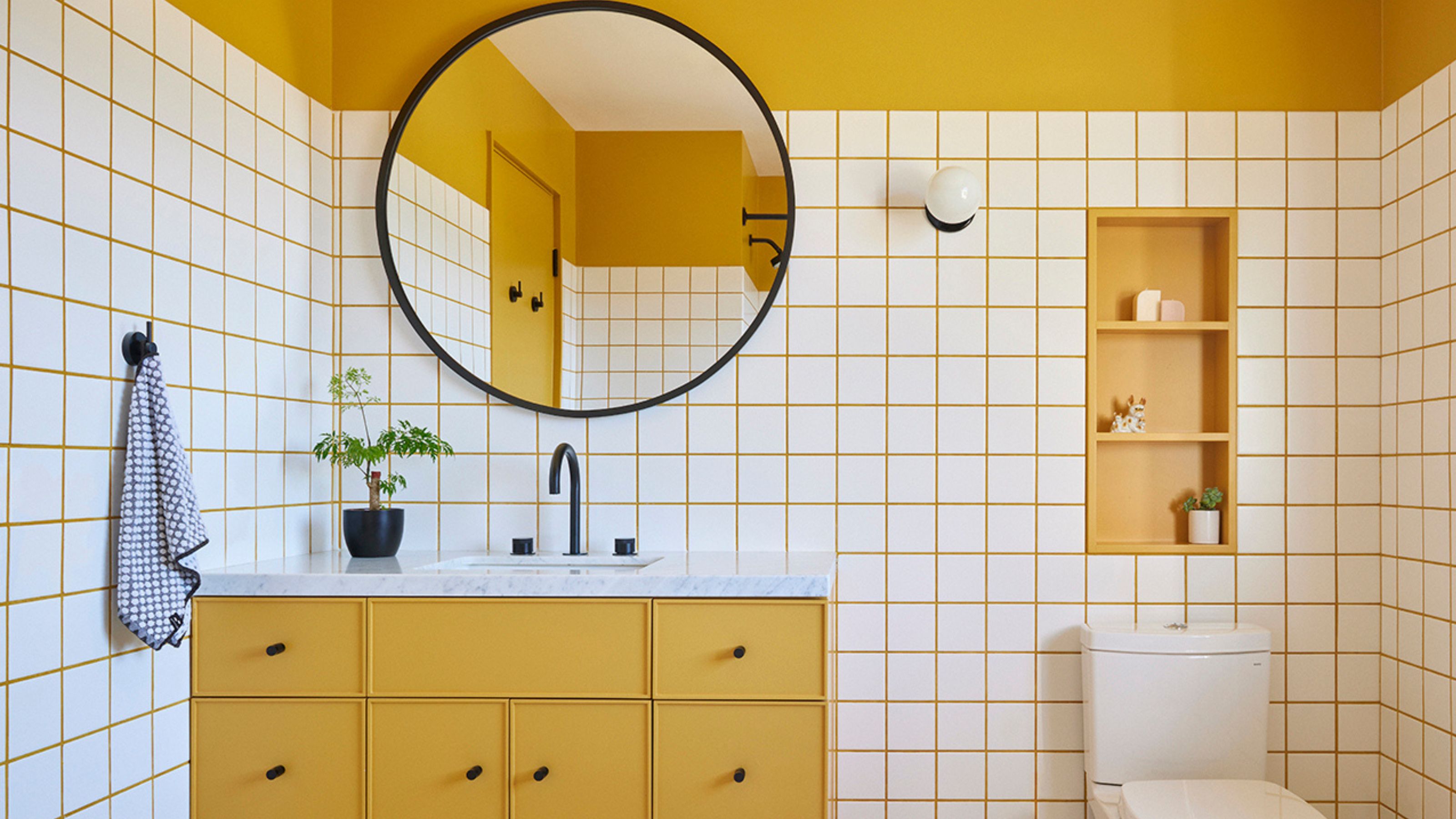 10 Yellow Bathroom Ideas That Vitalize Your Mornings and Look Unexpectedly Sophisticated While Doing So
10 Yellow Bathroom Ideas That Vitalize Your Mornings and Look Unexpectedly Sophisticated While Doing SoYellow is a color that by its very nature is energetic and full of life, and these designers have proved it's ideal for a bathroom
By Oonagh Turner
-
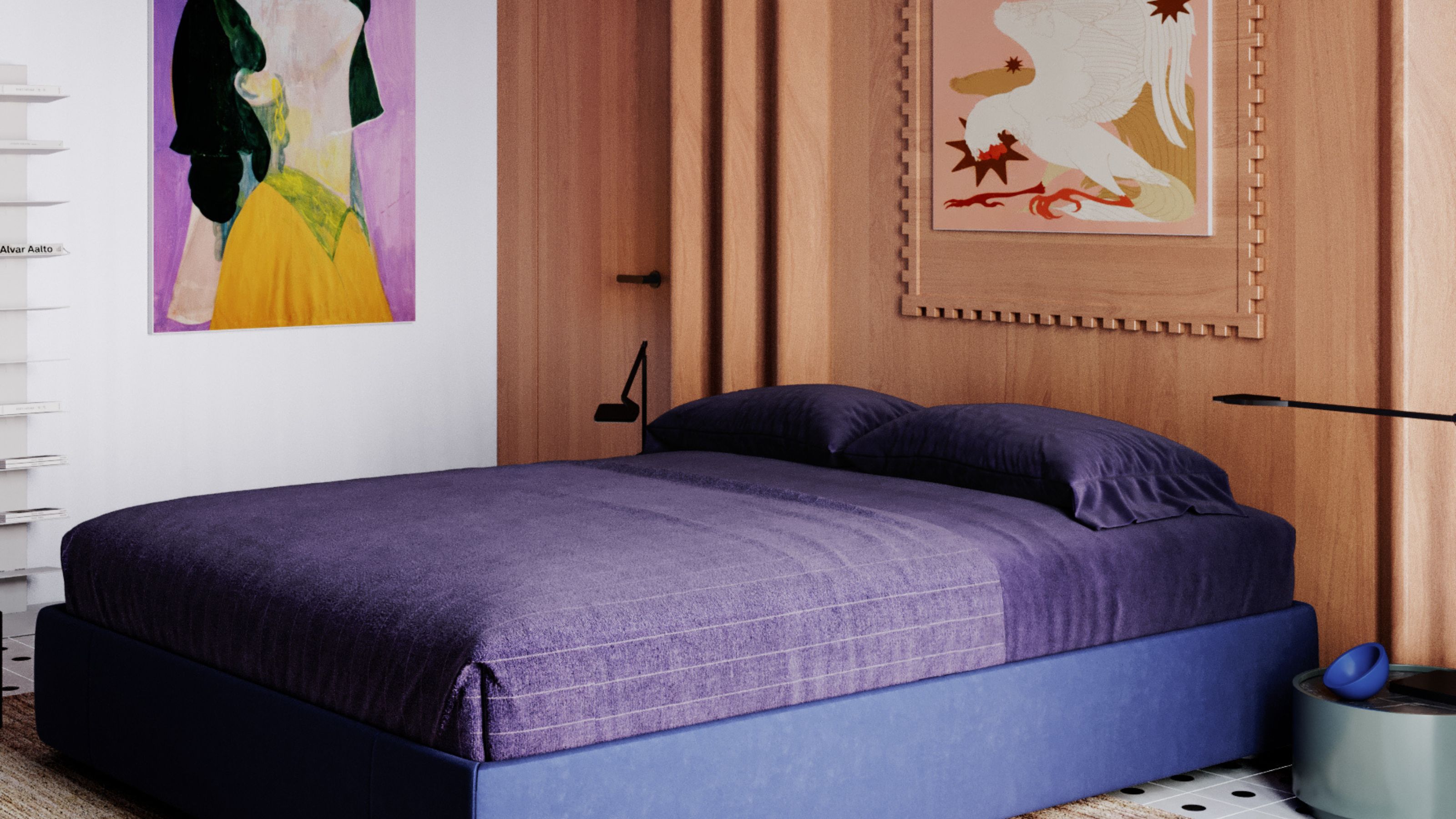 It's a Color Symbolic of Dreams, so These Purple Bedroom Ideas Almost Guarantee a Good Night's Sleep, Right?
It's a Color Symbolic of Dreams, so These Purple Bedroom Ideas Almost Guarantee a Good Night's Sleep, Right?Not always an obvious choice for the bedroom, these designs prove that purple has restful and calming qualities, making it perfect for the bedroom
By Oonagh Turner
-
 Amethyst, Heather, Pansy, Plum — Turns Out Decorating With Purple Opens You Up to a World of Possibilities
Amethyst, Heather, Pansy, Plum — Turns Out Decorating With Purple Opens You Up to a World of PossibilitiesPurple certainly isn't a color for the faint hearted, it's a shade that can smell your fear. Here's how to conquer it through your interiors
By Amy Moorea Wong
-
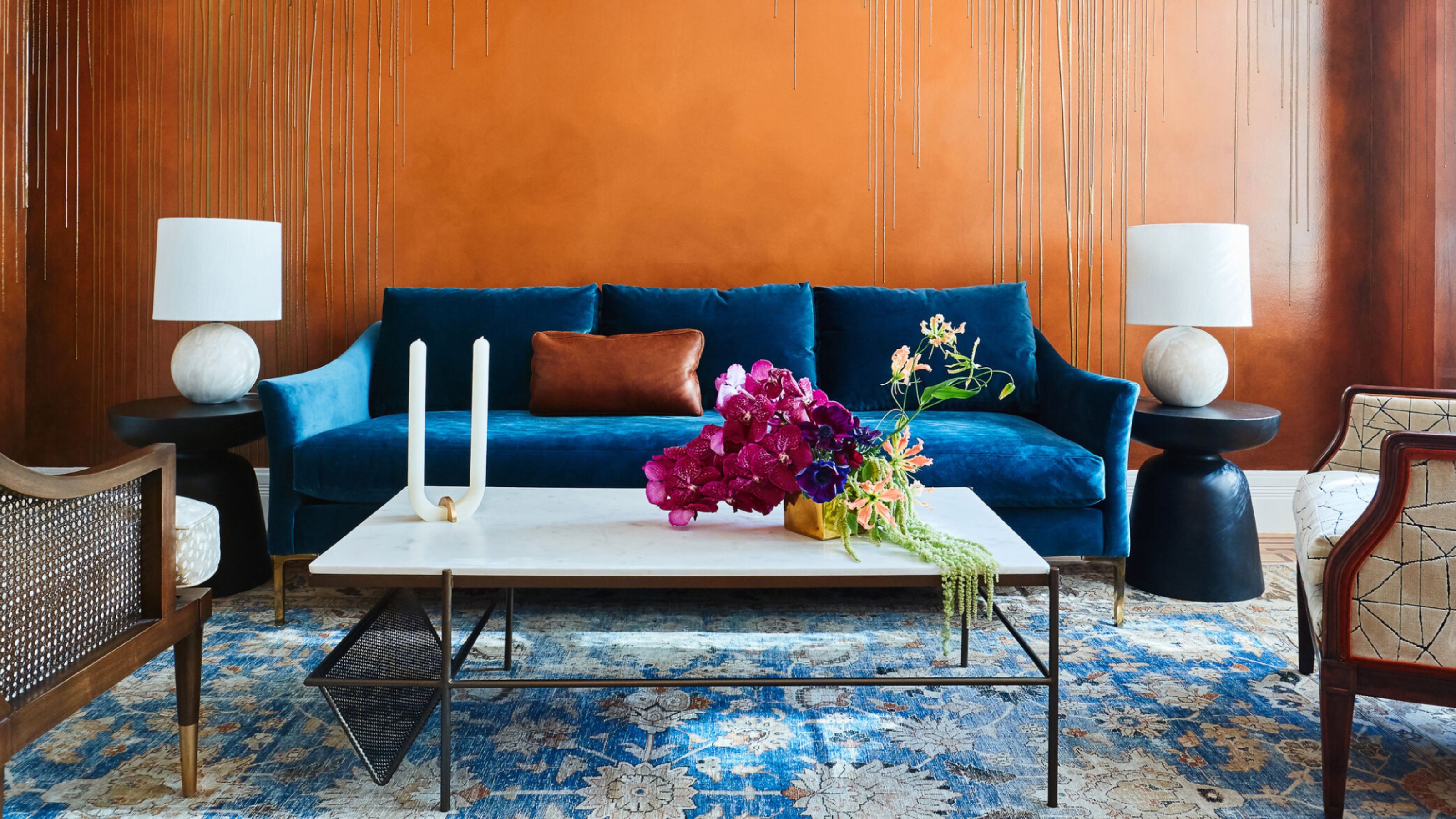 The Combination You Weren't Expecting to Love — 8 Blue And Orange Living Room Ideas That Feel Surprisingly Elevated
The Combination You Weren't Expecting to Love — 8 Blue And Orange Living Room Ideas That Feel Surprisingly ElevatedA blue and orange scheme for living rooms may sound jarring, but these spaces prove they're striking, vibrant, and certainly unforgettable
By Camille Dubuis-Welch
-
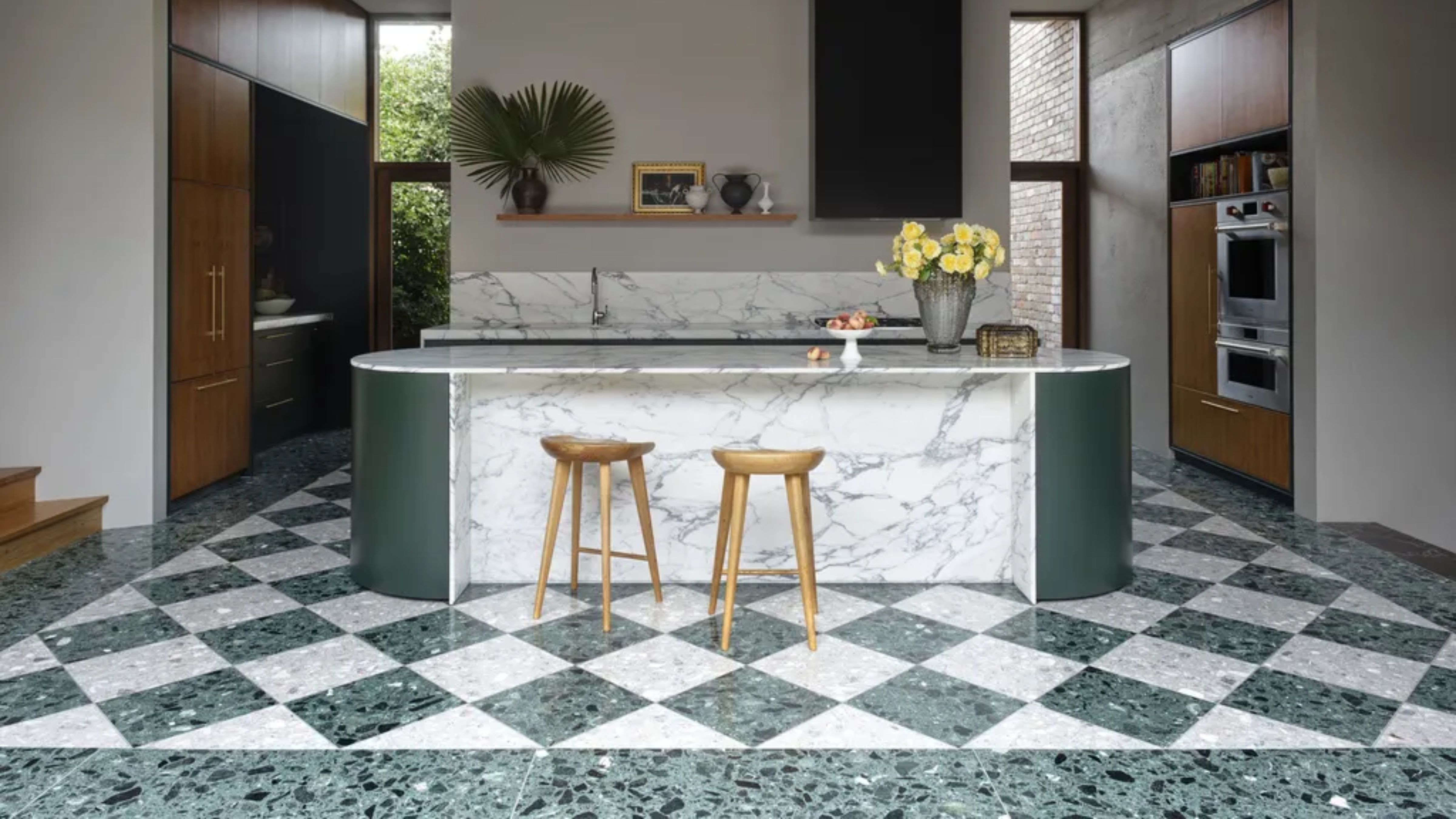 Smeg Says Teal, and We’re Listening — The Kitchen Shade of the Year Is Here
Smeg Says Teal, and We’re Listening — The Kitchen Shade of the Year Is HereDesigners are already using the soft, sea-glass green everywhere from cabinetry to countertops
By Julia Demer
-
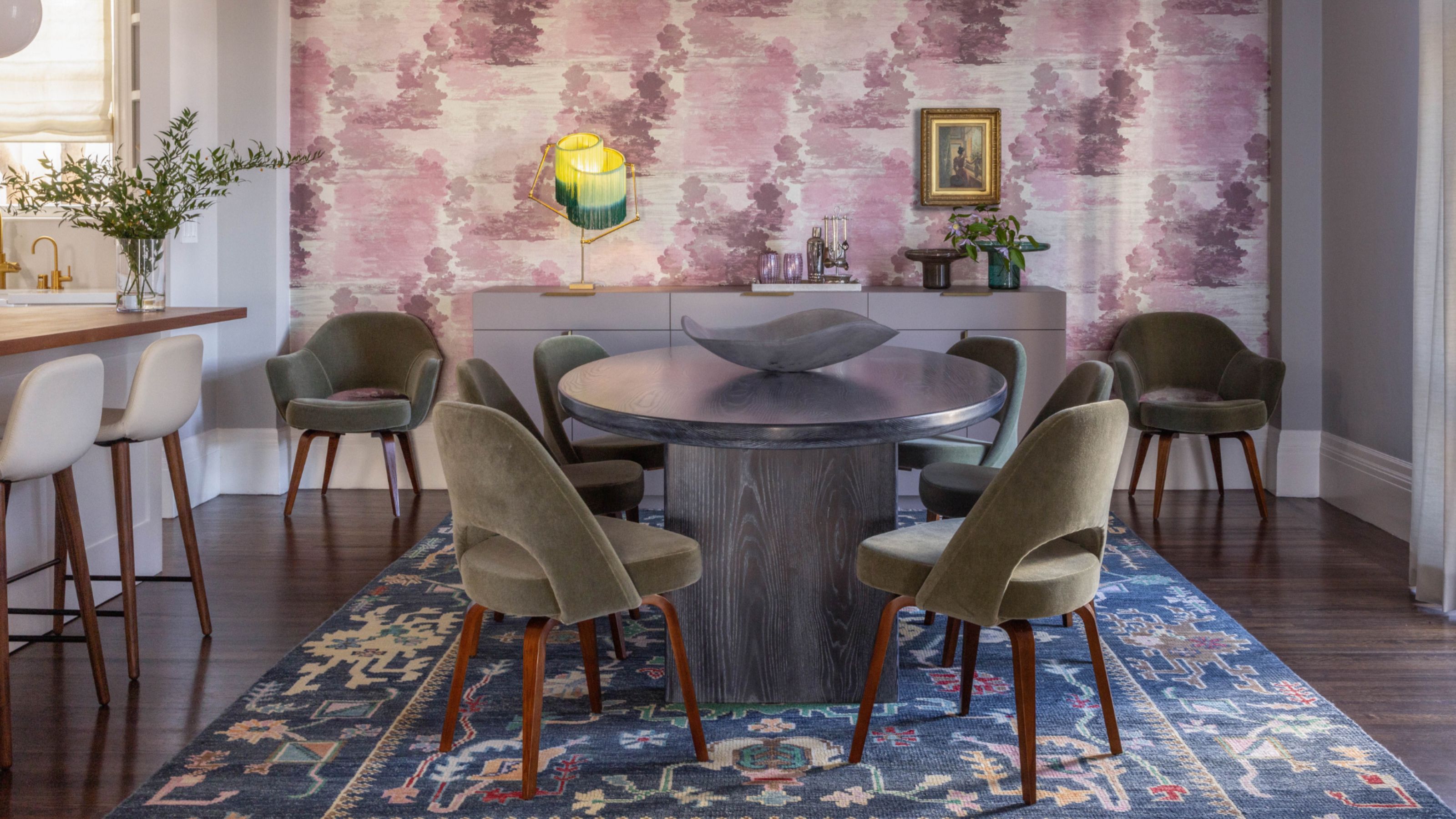 Do Yellow and Purple Go Together? Designers Reveal How to Make This Unexpected Pairing Feel "Totally Intentional"
Do Yellow and Purple Go Together? Designers Reveal How to Make This Unexpected Pairing Feel "Totally Intentional"In an era where unexpected combinations have become cool, we've done a deep-dive to discover how to pair yellow and purple in a space
By Camille Dubuis-Welch
-
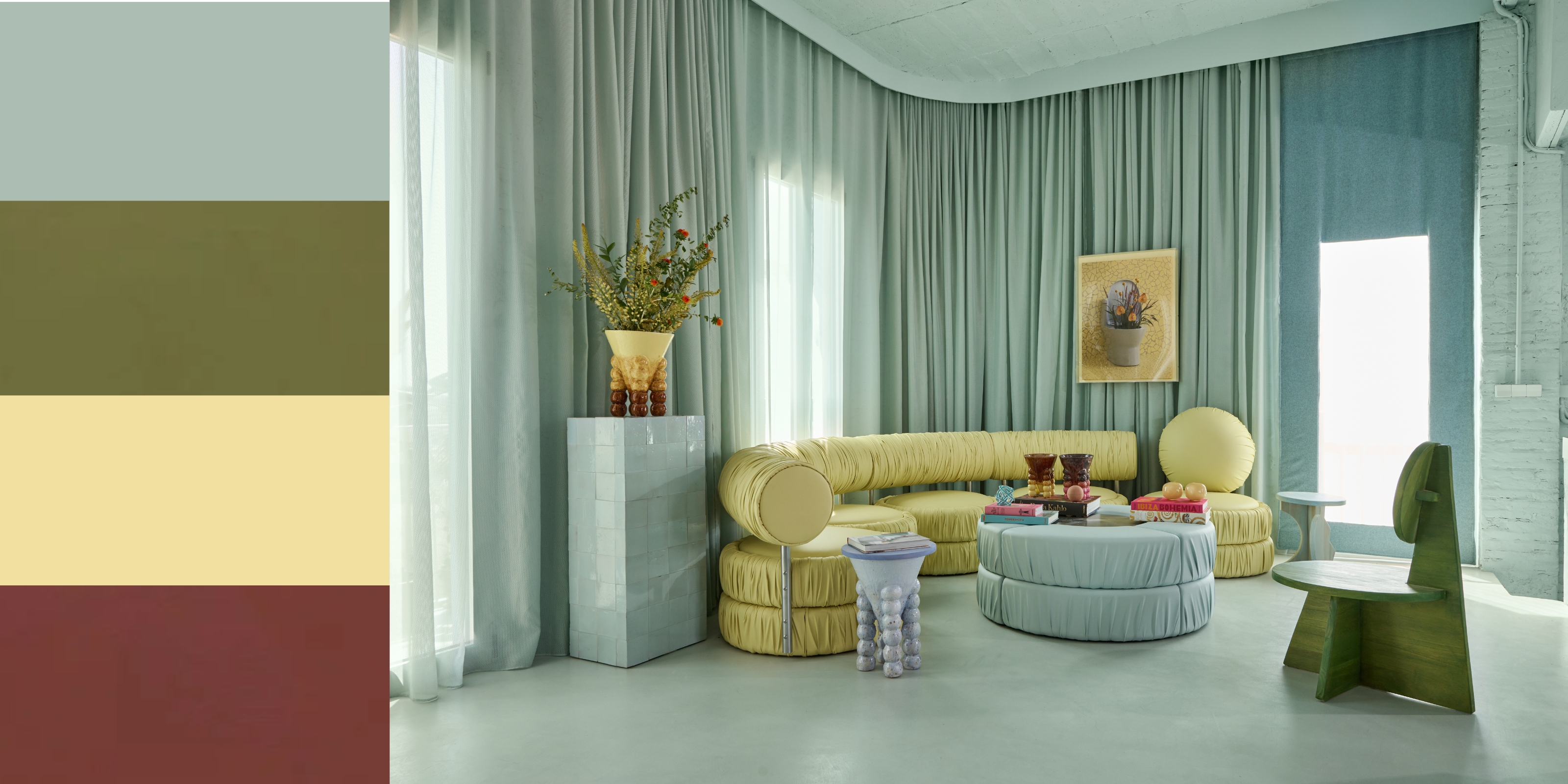 5 Unexpected but Seriously Stylish Spring Color Palettes to Shake Up the Season — "It's Pastel, but Punchy"
5 Unexpected but Seriously Stylish Spring Color Palettes to Shake Up the Season — "It's Pastel, but Punchy"Spring color palettes are notorious for their use of pretty pastels, but that doesn't mean they have to lack variation
By Olivia Wolfe
-
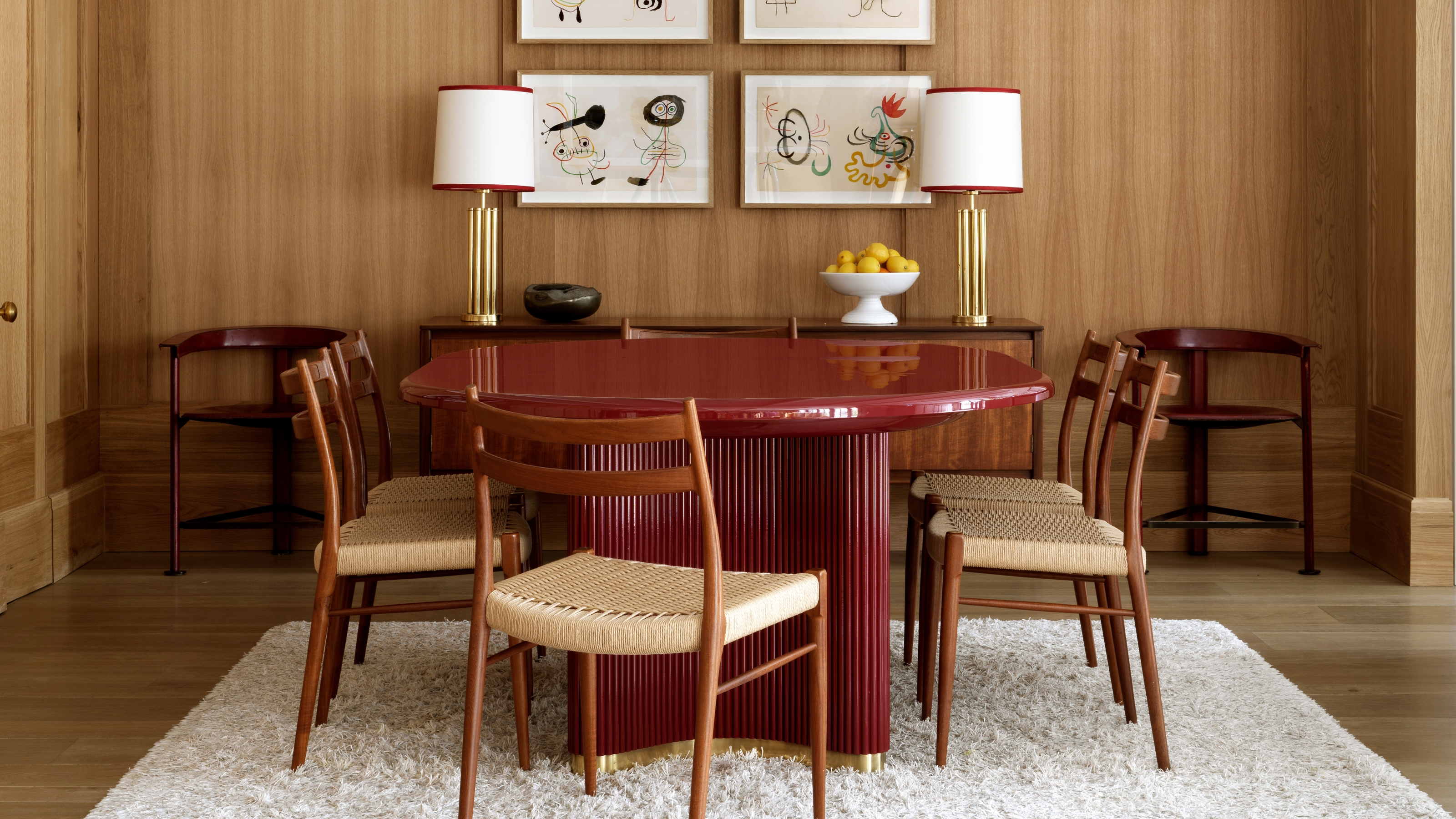 The 'Red Table Trick' Is the Easiest and Most Expensive-Looking Trend to Hit 2025 So Far
The 'Red Table Trick' Is the Easiest and Most Expensive-Looking Trend to Hit 2025 So FarA red dining table makes a seriously stylish statement; the beloved pop of red trend just got an bold and expensive-looking upgrade
By Olivia Wolfe




















